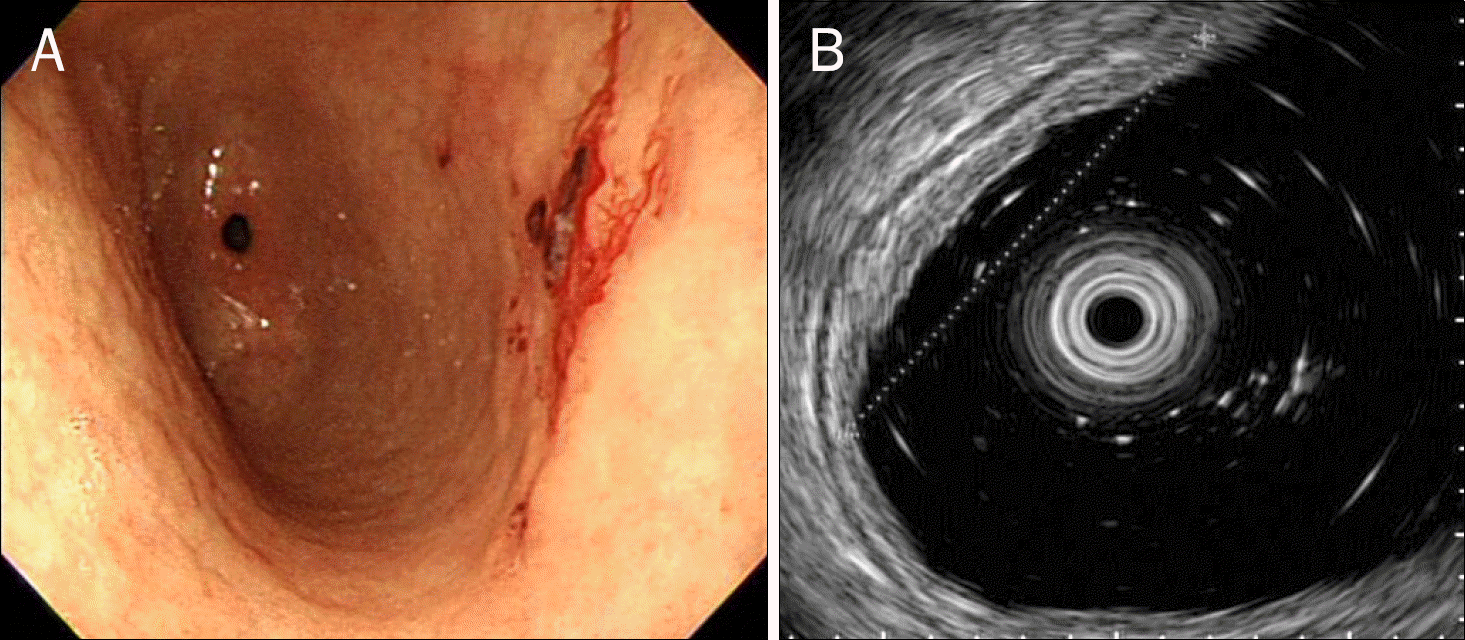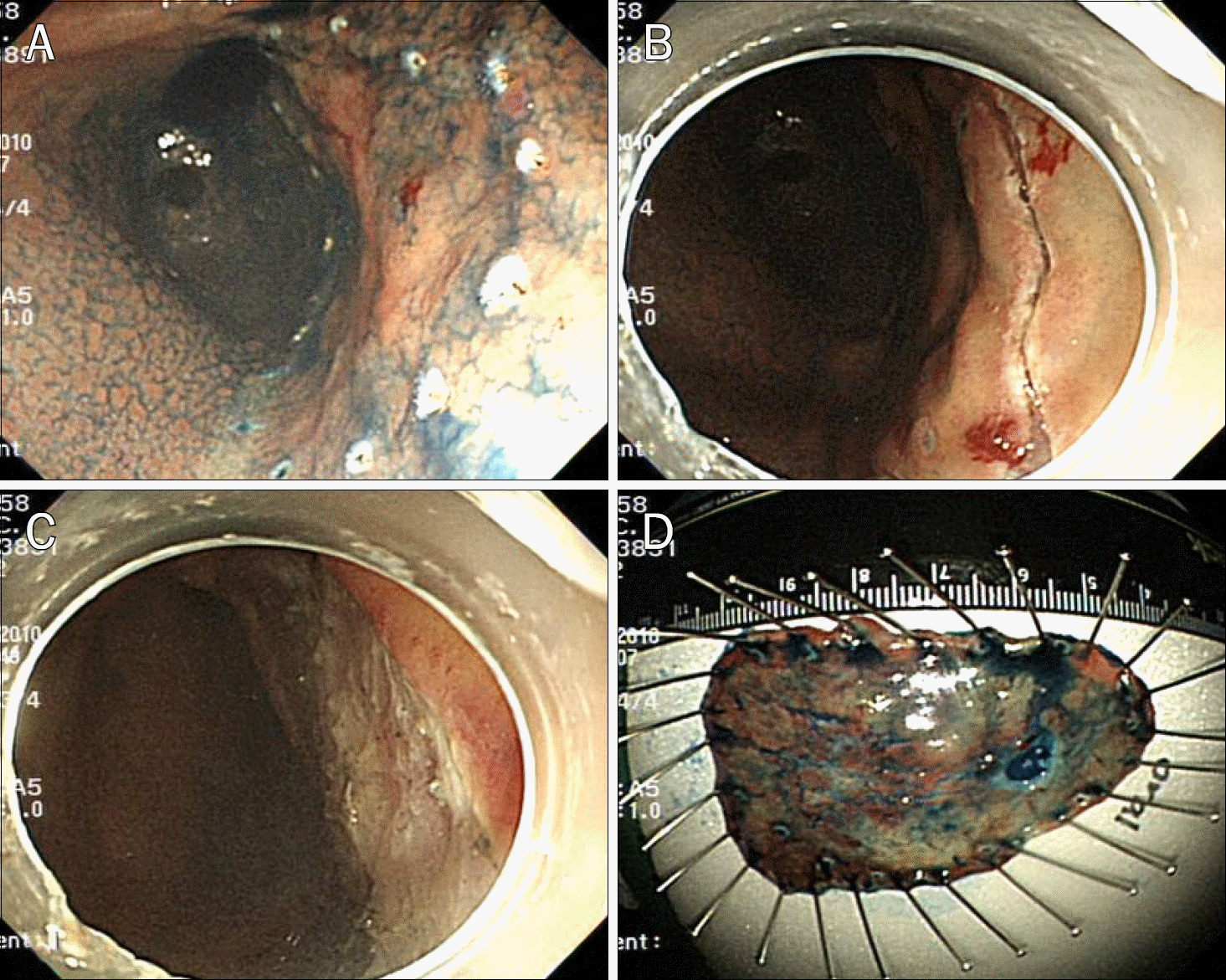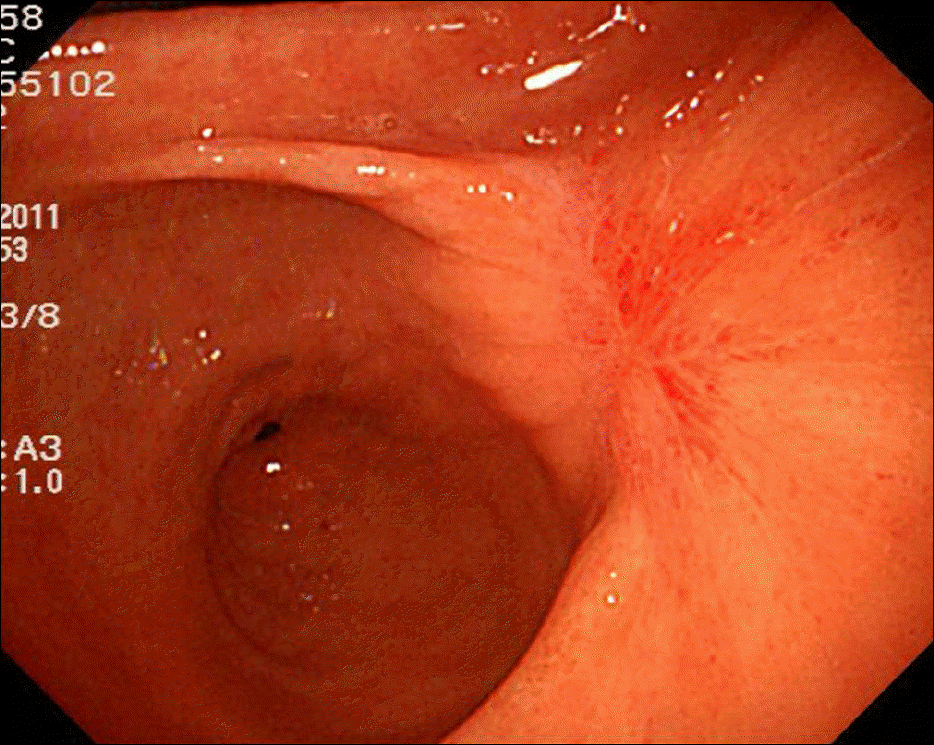Abstract
Endoscopic submucosal dissection (ESD) has been successfully performed in thrombocytopenic conditions such as in patients with liver cirrhosis but successful ESD for early gastric cancer (EGC) in hematologic diseases has rarely been reported. A 52-year-old male patient, who had previously been diagnosed with myelodysplastic syndrome 2 years ago, was admitted to our hospital for ESD of EGC. ESD was performed successfully in this patient after platelet concentrates transfusion on the day of ESD. ESD might be an option for the treatment of EGC in thrombocytopenia due to hematologic diseases when optimal supportive managements are applied.
References
1. Ogura K, Okamoto M, Sugimoto T, et al. Efficacy and safety of endoscopic submucosal dissection for gastric cancer in patients with liver cirrhosis. Endoscopy. 2008; 40:443–445.

2. Greenberg P, Cox C, LeBeau MM, et al. International scoring system for evaluating prognosis in myelodysplastic syndromes. Blood. 1997; 89:2079–2088.

3. Chung IK, Lee JH, Lee SH, et al. Therapeutic outcomes in 1000 cases of endoscopic submucosal dissection for early gastric neoplasms: Korean ESD Study Group multicenter study. Gastrointest Endosc. 2009; 69:1228–1235.

4. Kwon YL, Kim ES, Lee KI, et al. Endoscopic treatments of gastric mucosal lesions are not riskier in patients with chronic renal failure or liver cirrhosis. Surg Endosc. 2011; 25:1994–1999.

5. Villias C, Gourgiotis S, Veloudis G, Sampaziotis D, Moreas H. Synchronous early gastric cancer and gastrointestinal stromal tumor in the stomach of a patient with idiopathic thrombocytopenic purpura. J Dig Dis. 2008; 9:104–107.

7. Stanworth SJ, Estcourt LJ, Powter G, et al. TOPPS Investigators. A no-prophylaxis platelet-transfusion strategy for hematologic cancers. N Engl J Med. 2013; 368:1771–1780.

8. Rebulla P. Platelet transfusion trigger in difficult patients. Transfus Clin Biol. 2001; 8:249–254.

9. Repici A, Pagano N, Hassan C, et al. Endoscopic submucosal dissection of gastric neoplastic lesions in patients with liver cirrhosis: a systematic review. J Gastrointestin Liver Dis. 2012; 21:303–307.
Fig. 1.
(A) Initial gastroscopy. An irregularly elevated lesion, which bled easily when touched, is noted at the posterior wall of the antrum. (B) Endoscopic ultrasound. The lesion measured 3.0 cm at the long axis and is limited to the mucosal layer.





 PDF
PDF ePub
ePub Citation
Citation Print
Print




 XML Download
XML Download